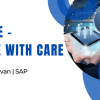When the COVID crisis hit, organizations had no choice but to respond to the challenges they faced by leveraging the resources they and their suppliers had at their disposal. Clearly, some were better prepared and responded with more resilience than others. Now we are many months into the crisis, and it's time to look at what went wrong and what organizations should change going forward.
The good news is that there are five activities that accelerate quick results - creating new capabilities, greater efficiencies, cost savings, and increased resiliency.
Benchmark Your Costs to Know the Market and Realize Savings
Supply and demand dynamics have drastically changed. As businesses have been negatively impacted and economies have been challenged, we see a willingness by suppliers to renegotiate existing relationships. Many suppliers are willing to offer lower rates and enhanced capabilities to shore and improve their business and engagement with customers. But first, organizations need to consider that COVID-19 has fundamentally changed the cost structure.
Globally, suppliers are leveraging work from home models, while most countries are experiencing unprecedented levels of high unemployment and reductions in GDP. Without a benchmark against current market rates, you won't have a clear understanding of today's new rate structure and could miss a significant portion of your cost savings opportunity.
Leverage Automation and Digitization to Realize New Capabilities, Greater Efficiencies and Improved Resiliency
There's been tremendous advancement in the number of new automation solutions, from simple robotic process automation to more advanced machine learning and artificial intelligence. Today, there is a continual emergence of new vendors, services, methods, tools, innovative platforms and digital technologies. Increasing portions of your business can leverage automation to produce more consistent services at lower prices with increased resilience.
If your current engagements don’t significantly leverage RPA, ML, and AI, therein lies a significant opportunity to improve your customer engagement, reduce operating costs, boost revenues, and improve profitability. Technology savvy process management experts can identify the opportunities within your organization for automation and identify the right technologies to transform these business processes.
When the dust settled, it was clear that organizations who were significantly digital (cloud-based) handled the remote working challenges of COVID-19 more resiliently than those who were not. Organizations that had intranet restrictions on applications access and dedicated data centers faced substantial challenges with scalability, employees getting access and being able to work. Additionally, organizations also experienced issues handling the digital demand and had to limit employees' access. As organizations consider the savings in terms of office space and employee commute time, work from home may be around long after the pandemic has ended. The success of digital operations and digital client engagement during the COVID crisis has clearly demonstrated the resiliency of this model.
Offboard Suppliers and Revise Your Location Strategy to Reduce Risk
As COVID-19 has shown, some suppliers were better prepared and more resilient in their response. Many suppliers did not fare well in their operational response and as a result, their clients’ operation suffered. For those that did not respond well, inadequacies in their risk management and capabilities were highlighted.
Organizations need to evaluate which suppliers pose the greatest risks as we advance. Companies should consider transitioning work to alternate suppliers and offboarding those suppliers who are not a good fit for your organization's overall risk appetite.
Inherent deficiencies, including poor technology infrastructure, ineffective government, and legal restrictions, caused many locations to respond poorly to COVID.Client operations experienced disruptions as a result.
Based on these experiences, organizations should determine if they need to make changes to their location strategy. Additionally, when evaluating location strategy, organizations should be careful not to increase concentration risk.
Consider Selective Insourcing to Increase Resiliency
It's fair to say that sourcing strategy played a significant role in how well organizations responded to COVID-19. A challenge many experienced was accessing key resources or capabilities like subject matter experts and project managers that they no longer retained inhouse. Often because of location limitations, organizations experienced limited access to these key positions now on the supplier side.
Just as governments are considering what manufacturing is critical and needs to be re-shored, corporations should also consider what is core and needs to be brought back inhouse. Functions and roles that are business-critical, have IP and/or security concerns, require agile development or offer competitive advantage, should be considered as possible insourcing opportunities.
Invest in Continuous Risk Monitoring as a Competitive Advantage
Risk management should no longer be viewed as a cost, but instead as a competitive advantage. Effective risk management enables not only the avoidance of costly disruptions, but also the preservation or even enhancement of revenue, and more resilient recoveries than your competitors. To realize these competitive advantages, organizations must make two changes to their risk management programs.
Firstly, they need to transition away from reactionary risk programs that rely heavily on periodic assessments and move to continuous risk monitoring. Today, most TPRM programs are reactionary and rely heavily on stale, point-in-time data for decision making. But resiliency in our rapidly evolving risk landscape requires the real-time risk intelligence that continuous monitoring provides.
Secondly, risk programs must view risk through a much broader risk aperture. A myopic third-party risk focus on cyber and financial is inadequate and leaves organizations vulnerable and unaware of significant third-party and location-based risks. Take, for example, location-based events, including disease outbreaks, severe weather, and social unrest. These events have recently proven to be extremely disruptive and have been rising in both frequency and severity.
Now is the opportune time to think beyond band-aids and leverage one or more of these five accelerators. Organizations that do so will rapidly realize results from new capabilities, greater efficiencies, cost savings and improved resiliency going forward.









